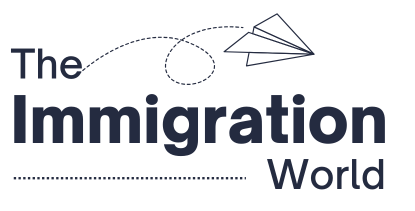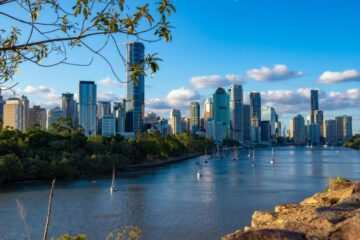If you’re a skilled professional eyeing a move to Australia or New Zealand, there’s good news brewing on both sides of the Tasman Sea. In May 2025, both countries rolled out updates to their skilled occupation lists — think of them as VIP guest lists for foreign workers — and the changes could open new doors for tech wizards, healthcare heroes, and green energy gurus alike.
But what’s changed, and what does this mean for your migration game plan? Let’s break it down, country by country, list by list.
Key Takeaways
Why Are Australia and New Zealand Updating Their Skilled Occupation Lists in 2025?
Here’s the deal: labor shortages aren’t just a buzzword — they’re biting hard. Both Australia and New Zealand have been grappling with persistent gaps in sectors like healthcare, construction, education, and tech. After COVID-era immigration slowdowns and increasing pressure from businesses desperate for talent, it became painfully clear that their skilled migration systems needed a revamp.
So, in classic bureaucratic fashion — but with a dash of 2025 pragmatism — both nations are fine-tuning their occupation lists. The goal? Make it easier for the right talent to come in, settle down, and get to work in sectors that can’t afford to wait. Australia is leaning into its tech and sustainability future, while New Zealand is doubling down on core services like health and education, all while trying to keep things fairer with updated wage rules.
Long story short, this isn’t just a list shuffle — it’s a targeted effort to align immigration policy with real economic needs.
What’s New on Australia’s Skilled Occupation List?
Australia’s latest update to the Core Skills Occupation List (CSOL) is basically a love letter to the future — and the geeks who build it.
The country has thrown open its doors to emerging tech professionals, adding high-demand roles like AI specialists, machine learning engineers, cybersecurity analysts, quantum computing experts, and robotics engineers. These aren’t just buzzwords — they’re now official pathways into Australia through visas like Subclass 189 (Skilled Independent), 190 (Skilled Nominated), and 482 (Temporary Skill Shortage).
Another big win? Clean energy. Roles in sustainable engineering, solar project management, and green hydrogen development have been cut. It’s clear Australia is gunning to be a regional leader in renewable energy, and it wants the brightest international minds to help get there.
For professionals in these fields, this isn’t just a pat on the back — it’s a golden opportunity to apply for visas that fast-track permanent residency or offer long-term work options. And the cherry on top? These roles often qualify for state or territory nomination, which boosts your chances if you’re chasing a points-based visa.
Which Occupations Are Still Missing in Australia’s List?
Now, not everything’s sunshine and subclass 189s. Despite strong demand, construction workers—think crane operators, excavator drivers, and other trades — have largely been left out of the update. And let’s just say the industry isn’t thrilled.
Australia’s building and infrastructure sectors are already feeling the squeeze. With major public works in the pipeline and a booming housing backlog, you’d think importing construction labor would be a no-brainer. But as it stands, these workers remain mostly outside the skilled migration system, sparking heated debates among builders, unions, and policy folks.
Also Read: Are You Eligible for a Second 417 Working Holiday Visa in Australia?
So if you’re swinging a hammer or operating heavy machinery for a living, the current list might feel like a closed door. That said, don’t count Australia out just yet — pressure from industry groups could force another update sooner rather than later.
What Has Changed in New Zealand’s Green List?
Across the ditch, New Zealand is embracing a more grounded approach — literally. It’s Green List, which already made headlines in 2022 for fast-tracking in-demand roles, has just been supercharged.
The expanded list now prioritizes positions in healthcare (think nurses, midwives, and aged care workers), engineering (civil, structural, and mechanical), education (early childhood and secondary school teachers), and even agriculture (horticultural specialists, agronomists, and veterinary scientists).
And this isn’t just lip service — many of these roles are eligible for the Straight to Residence Visa or the Accredited Employer Work Visa (AEWV), meaning if you’ve got the right job offer, you can skip the queue and settle in faster.
New Zealand’s message is pretty clear: if you’ve got the skills, they’ve got the visa — and probably a sheep-dotted hillside with your name on it.
How Are Wage Requirements Changing in New Zealand?
Here’s where things get spicy — and a little fairer.
Starting March 10, 2025, New Zealand ditched its flat median wage threshold for the AEWV and adopted a new rule: pay migrant workers at the same market rate as locals. In other words, no more minimum pay gimmicks — if Kiwis in the role earn $36 an hour, that’s what you’ll need to offer your new international hire.
It’s a move designed to level the playing field and silence critics who argued that the old system encouraged underpaying migrants. For employers, it means doing a bit more homework — and budgeting — but it also keeps things transparent and fair.
For workers, this is a win. You’re not just filling a gap; you’re being valued at par with your local peers. And in the long run, that builds trust in New Zealand’s migration model.
Who Stands to Benefit from These Updates?
If you’re an international professional with experience in AI, engineering, healthcare, or renewable energy, congrats, 2025 might be your year.
The new updates make it easier to qualify for permanent residency, secure long-term work visas, and even bring your family along (depending on your visa stream, of course). For many, especially those from countries with limited local opportunities in these sectors, Australia and New Zealand suddenly look like shiny new career destinations.
It’s also a green light for students and recent graduates in relevant fields, because if you’re trained in one of these key industries, you’re stepping into a job market that’s actively recruiting people like you.
How Can You Apply Under the New Lists?
First things first — check the updated occupation lists on the official immigration websites for both countries:
Once you confirm your occupation’s eligibility, you’ll want to explore your visa options. In Australia, that might mean the Subclass 189, 190, or 482 visas. In New Zealand, the AEWV or the Straight to Residence Visa is our best bet for documents. Get ready to assemble your greatest hits: academic transcripts, professional experience letters, licensing (if required), proof of job offers, and yes, passport copies. It’s paperwork time, and no, there’s no shortcut for that part.
Also, keep tabs on wage thresholds, English language requirements, and skills assessments, especially for regulated professions. If you’re feeling lost, a registered migration agent can be worth their weight in gold.
Final Thoughts: A New Era for Skilled Migration?
Australia and New Zealand aren’t just shuffling paperwork — they’re reshaping their immigration pipelines to attract talent that can drive innovation, care for aging populations, and build greener, smarter infrastructure. And if you’re a skilled worker with the right credentials, you’re not just welcome—you’re in demand.
The tweaks may not please everyone (sorry, crane operators), but for many, this is a chance to turn career aspirations into real-world opportunities, with a view of the Opera House or a life in Hobbiton as a nice bonus.
Planning to make a move? Stay sharp, stay ready, and maybe start brushing up on your accent.





